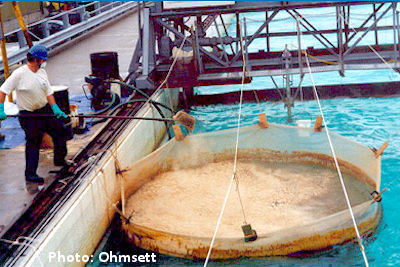Other Equipment
Other equipment used for oil spill cleanup include the following:
Vacuums and Centrifuges
Oil can be sucked up along with the water, and then a centrifuge can be used to separate the oil from the water, allowing a tanker to be filled with near pure oil. Usually, the water is returned to the sea, making the process more efficient, but allowing small amounts of oil to go back as well.
Shovels and Other Road Equipment
Shovels are used to clean up oil on beaches.
Sorbents
These are large absorbents that absorb oil. To be useful in combating oil spills, sorbents need to be both oleophilic (oil-attracting) and hydrophobic (water-repellent). Although they may be used as the sole cleanup method in small spills, sorbents are most often used to remove final traces of oil or in areas that cannot be reached by skimmers.

Sorbents can be divided into three basic categories:
- Natural organic sorbents include peat moss, straw, hay, sawdust, ground corncobs, feathers, and other readily available carbon-based products.
- Natural inorganic sorbents consist of clay, perlite, vermiculite, glass wool, sand, or volcanic ash. They can adsorb from 4 to 20 times their weight in oil.
- Synthetic sorbents include man-made materials that are similar to plastics, such as polyurethane, polyethylene, and polypropylene and are designed to adsorb liquids onto their surfaces.
Sorbent Booms
Sorbent boom looks like a long sausage made out of a material that absorbs oil. If you were to take the inside of a disposable diaper out and roll it into strips, it would act much like a sorbent boom. Sorbent booms don't have the "skirt" that hard booms have, so they can't contain oil for very long.
Knowledge Check Choose the best answer for the question.
5-3. What is required for sorbents to be useful in combating oil spills?
You forgot to answer the question!
